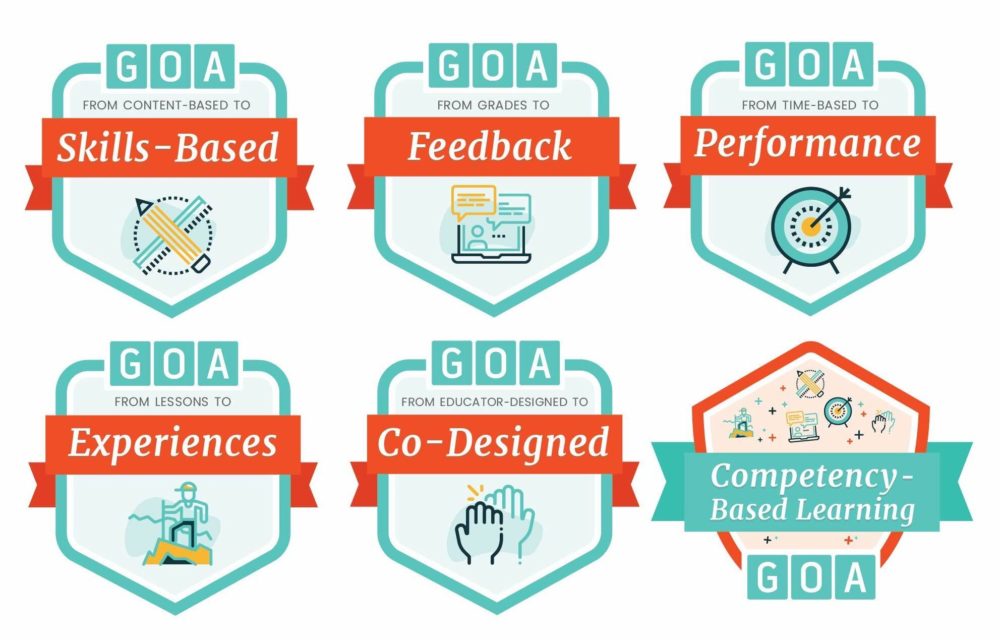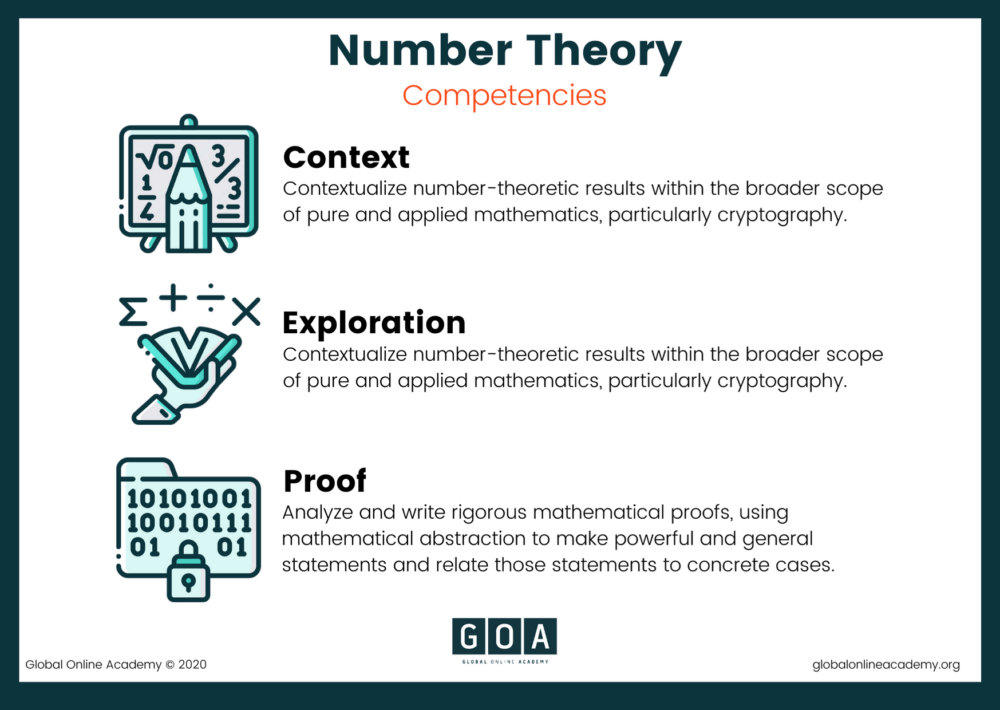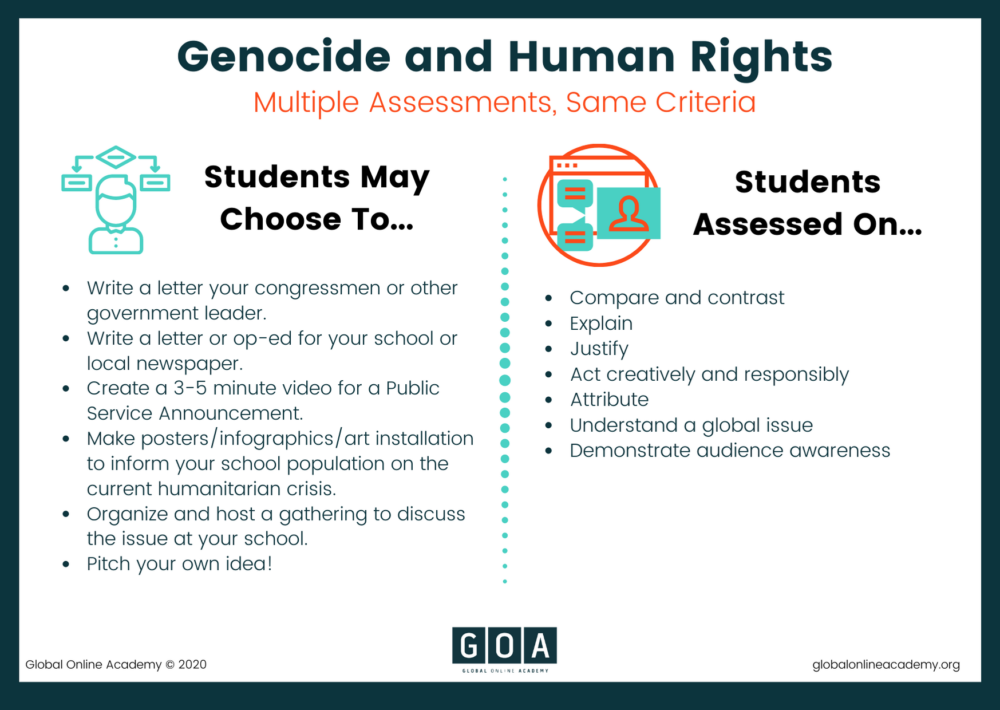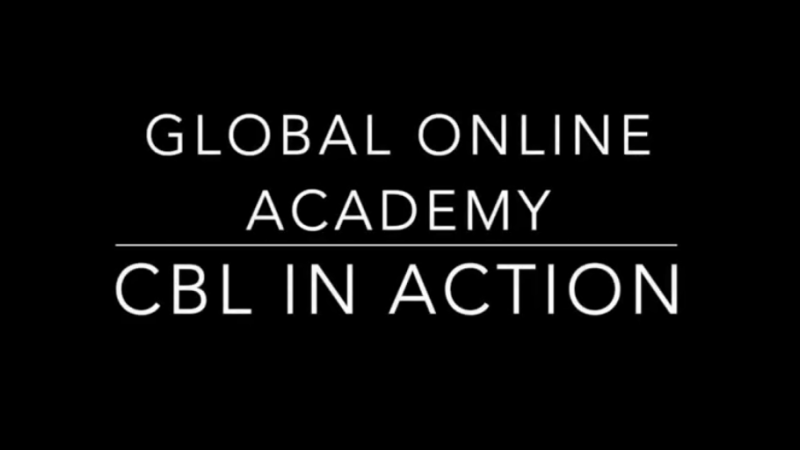Competency-Based Learning: A Long-Term Teaching Strategy for Online and Hybrid Learning
How might we use online learning to improve and enrich the in-person school experience?
This is an important question to ask even as schools continue to navigate the COVID-19 pandemic by shifting between online, hybrid, and in-person formats. Teachers can’t continue to rely on the quick, disparate strategies they picked up when they were forced to move online several months ago. For one, that haphazard approach is no guarantee that students engage in rigorous, high-quality learning. For another, the frenetic energy that comes with emergency remote teaching is not viable when it comes to supporting the wellness of teachers and students.
What teachers need is a long-term online and hybrid learning strategy. Competency-based learning offers just such a strategy.
What is competency-based learning?
Competency-based learning (CBL) is a system designed to ensure all students develop the skills they need to succeed in school and beyond. The promise of CBL is to support student agency, sustain equitable practices, and promote transfer and authentic learning experiences. By mirroring how people learn, work, and succeed in the world, a CBL environment is designed for relevance and performance, where learners absorb key knowledge and develop essential competencies through authentic practice.
Why does competency-based learning work online?
When it comes to online learning, intentionality is the name of the game. Even if you engaged in emergency remote teaching at the beginning of 2020, the success of your online experience with students depended heavily upon the intentionality with which you designed that experience. Being deliberate about your asynchronous and synchronous strategy, about making online experiences navigable, and setting clear expectations around online engagement were key factors in the quick transition to online learning.

GOA has articulated five shifts for educators who want to adopt competency-based learning. Our Competency-Based Learning Series covers those five essential shifts and offers badges to certify teachers.
CBL takes the intentionality necessary for online learning and dials it up. CBL environments have clearly articulated competencies and learning outcomes that not only help educators make decisions about pedagogy, content, and assessment, but also support students in achieving greater clarity when it comes to understanding what they’re working on, what they’re working toward, and how they’re progressing in their work.
There’s a reason why GOA’s Student Program is competency-based. Since 2011 GOA has been providing students with high-quality, passion-based online courses, and in 2016 we adopted CBL because, as my colleague Eric Hudson notes in “How to Use Online Learning to Support Competency-Based Learning,” “What we have realized is that, when taken together, online learning and competency-based learning add up to something even stronger: a vision for learning that ensures students do cognitively complex work that matters to them, wherever and whenever that learning might happen.”
Ultimately, CBL is a way for teachers to systemize online learning to make it more sustainable while also offering rigorous learning experiences.
Let's look at some examples of how to make three of these shifts for CBL work online.
What does competency-based learning online look like?
1. From Content-Based to Skills-Based
What immediately became apparent to educators transitioning to online learning in early 2020 is that learning could no longer be just about getting through the curriculum. Online learning favors depth over breadth, with educators having to “Marie Kondo the curriculum” and make decisions about the “essentials” and the “nice to haves.”
With clear goals in the form of competencies and learning outcomes governing the universe of a particular course, content becomes the vehicle by which competencies are developed. Educators make decisions around content selection based on key threshold concepts. Threshold concepts ask us to curate content according to the skills that mastering the content helps students develop, not according to the subjective criteria of what we think students should know.

In GOA's Number Theory course, three core skills drive the design of instruction, curriculum, and assessment. These competencies are then fleshed out with specific learning outcomes.
2. From Time-Based to Performance Based
Assessment design proved to be one of the greatest challenges in the transition to online learning. Educators found that tests and quizzes dependent on the recall of information were limited in capturing student learning in online settings. Instead of expending energy on trying to set up cameras to monitor students taking tests at home—with some troubling implications around equity, privacy, and efficacy— educators began to opt for performance-based assessments in which students had to apply their skills and knowledge to authentic contexts.
In CBL, assessments are purposefully aligned to competencies and learning outcomes and are designed to create an immersive experience that replicates the work of professionals. Consider this math journal portfolio that Gowri Meda of Oregon Episcopal School developed as part of her GOA CBL course.
In addition, CBL’s focus on equity, on ensuring all students have the resources and support they need to learn, is deeply compatible with online learning given the need for flexibility in terms of when, where, and how students learn. CBL affords greater opportunities for multiple pathways for students to develop and hone their skills while still retaining alignment to the core goals. While the shapes assessments may take vary, they are unified by the same set of principles. Assessment becomes evidence both of and for learning. For example, in a project for GOA's Genocide and Human Rights course, students may choose the form their assessment takes, but the competency-based criteria are the same.

The project offers multiple ways to complete the work but uses the same competency-based criteria for assessment. Click here to see the complete rubric.
3. From Grading to Feedback
Every action and interaction online produces an artifact that can be commented upon. While the beauty of online learning is that there are so many opportunities to provide feedback, the curse is that providing feedback online can seem even more daunting and overwhelming than in a brick and mortar setting.
However, the very competencies and learning outcomes that can inform content selection and assessment design under competency-based learning can also be used as a way to target feedback. Rather than trying to provide feedback on compliance-oriented tasks, the focus shifts to providing feedback on specific skills-based targets, or learning outcomes, that drive learning. For example, consider this rubric from GOA's Climate Change and Global Inequality course.
Competencies and learning outcomes provide a shared language for students to use as well, both in self-reflecting and providing peers with feedback. This unified understanding that emerges from a cohesive set of competencies and learning outcomes provides students with greater clarity, especially as they’re tackling a lot of learning online on their own. In the below video, GOA teacher and coach Jessica Gould explains how she uses competencies and learning outcomes to support students in deeper reflection.
Jessica Gould: CBL in Action
Online learning is here to stay, and as we consider what it means to create high-quality, rigorous online learning experiences that challenge students while offering flexibility, competency-based learning provides a way forward.

